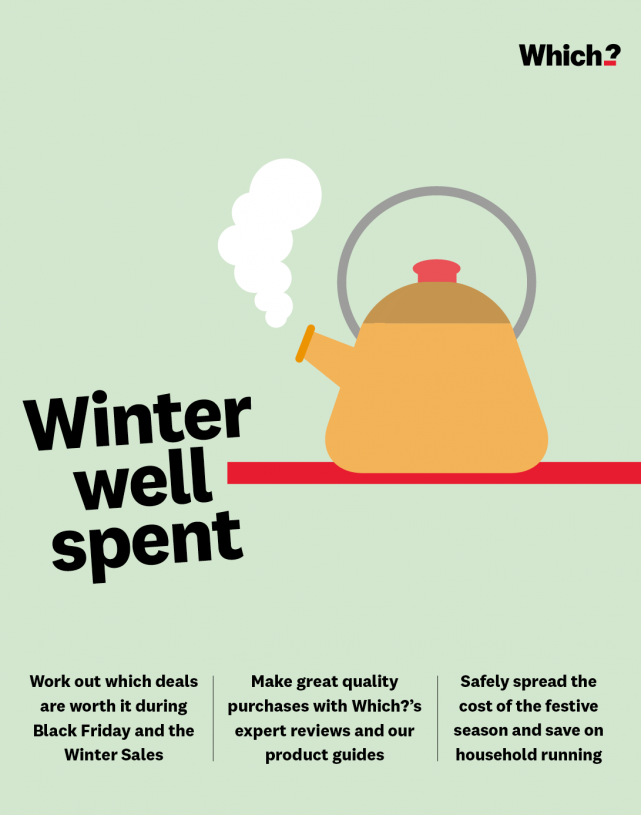User guide
Finding your way around the guide
To navigate between pages, click or tap the arrows to go forwards to the next page or backwards to the previous one. The arrows can be found either side of the page and at the bottom, too (circled in green, below).


Menu/table of contents
Click or tap on the three horizontal lines in the top-right of your screen to open the main menu/table of contents. This icon is always visible whether you're using a computer, tablet or smartphone. The menu will open on top of the page you’re on. Click on any section title to visit that section. Click the cross at any time to close the table of contents.
Text size
On a computer, you'll see three different sized letter 'A's in the top-right of your screen. On a smartphone or tablet these are visible when you open the menu (see above). If you’re having trouble reading the guide, click or tap on each of the different 'A's to change the size of the text to suit you.
Pictures
On some images you'll see a blue double-ended arrow icon. Clicking or tapping on this will expand the picture so you can see more detail. Click or tap on the blue cross to close the expanded image.
Where we think a group of images will be most useful to you, we've grouped them together in an image gallery. Simply use the blue left and right arrows to scroll through the carousel of pictures.
Links
If you see a word or phrase that's bold and dark blue, you can click or tap on it to find out more. The relevant website will open in a new tab.
Jargon
If you see a word or phrase underlined, click or tap on the word and small window will pop up with a short explanation. Close this pop-up by clicking or tapping the cross in the corner.
Help
On a computer, you'll see a question mark icon in the top-right of your screen. On a smartphone or tablet this is visible when you open the menu (see above).
Clicking or tapping on the question mark will open this user guide. It opens on top of the page you're on and you can close it any time by clicking or tapping the cross in the top-right corner.

Put to rights
Get help if you've been duped into a dodgy deal or purchased a poor-quality product.

Scammers stole nothing short of £1.2 billion from UK consumers in 2022, or roughly £2,300 a minute. Being the victim of a scam can take a huge toll not only on your finances, but also your mental health. Here, we pass on tips for protecting yourself from scams and how to get your money back if you are scammed. If the product you buy turns out to be faulty, dodgy or not what it should be, we also run through how to use your consumer rights.
It's always important to be aware of new scams. Which? keeps track and posts our latest discoveries on our website. If you've come across a scam yourself, make sure to report it to us.
Spot an online shopping scam
Online shopping scams are often hard to spot, as fraudsters can mimic official sites very convincingly. If you’re not looking out for this, you could fall victim and part with money in return for nothing or counterfeit goods. Read on to discover telltale signs of online scams.
- Too good to be true? If the price is incredibly low, there may be something wrong. If in doubt, try comparing the price of the same product on another retailer or website. If it seems too good to be true, it usually is.
-
Browse the website Look out for poor spelling, grammar or phrasing that sounds odd. If there’s no ‘contact us’ page, that’s a sign that the site could be fraudulent.
-
Be wary of social media adverts Scammers can pay to have their message advertised on your timeline. If you see a new social media account advertising for a company you know, it might be a scammer pretending to be a new branch or account for that brand.
-
Scam adverts Anyone can pay to advertise products and services on search engine results. On Google, paid-for results are usually labelled ‘Ad’. Many are legitimate, but this is where scam ads also appear.
-
Never pay by bank transfer If it is a scam, getting your money back will be harder than if you use a credit or debit card.
How to get your money back if you've been scammed
There are ways to recover money you may have lost. We have a dedicated guide on what your options are on our website, whether you paid by debit card, credit card, bank transfer or another method. You can also find further support for any emotional distress you may have experienced, including non-judgemental advice lines.
If you make a purchase with a credit card that’s between the value of £100 and £30,000, excluding payments through an agent or for a third-party product such as tickets, under Section 75 your credit card company can be jointly responsible for any faults that develop. You can either claim for a refund or for the cost of repairs. For more on credit cards, see p13.
Apply your consumer rights
The Consumer Rights Act (2015) protects almost all purchases you make, whether for products, services or digital content.
When it comes to a products, whether you purchase in-store or online they must meet the following standards:
-
Fit for purpose The product must be able to do what it is supplied for, as well as any specific purpose you made known to the retailer before you agreed to buy the goods.
-
As described It must match any description given, or any models or samples shown at the time of purchase.
-
Satisfactory quality It shouldn't be faulty or damaged when you receive it.
Contact the retailer (not the manufacturer) if what you’ve bought doesn’t satisfy one or more of the three criteria above.
A guarantee is an agreement to repair or replace a product free of charge, or offer a refund on goods that do not meet the specifications in the guarantee.
A warranty provides cover for the unexpected failure or breakage of goods, usually after the manufacturer's or trader's guarantee has run out.
Our Consumer Rights hub is packed with detail about what to do if something goes awry with what you buy. Whether your new product has stopped working or a delivery has been stolen from your doorstep, you’ll find the answer there. We also have carefully crafted template letters you can use to help to get you the best result.
The Consumer Rights Act gives timelines for the retailer’s obligations:
-
Between 0 and 30 days You can claim a full refund for goods that are of unsatisfactory quality, unfit for purpose or not as described.
-
After 30 days and up to six months You must give the retailer one opportunity to repair or replace the product before you can claim a refund.
-
Six months or longer After this point, the burden of proof is on you to prove the product was faulty at purchase. In practice, this may require some form of expert report, opinion or evidence of similar problems or defects across the product range.
If you'd prefer a repair or replacement in the first 30 days after purchase you can ask the retailer, but they cannot refuse to give you a refund.
If you order your product in store to have it delivered later or buy it online, the clock doesn't start ticking until your goods are delivered to you.
The bottom line: Contact the retailer as soon as you discover your purchase isn’t up to scratch.
We’re experts in consumer law, as well as other areas that require legal expertise, including homes and property, holiday issues, employment law and motoring. Join Which? Legal to take advantage of unlimited bespoke guidance to help you to get the best outcome for your situation.

